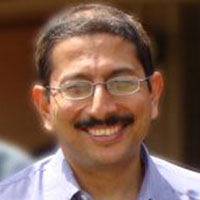Becoming an ACTiZEN: The Long-Term Perspective
Stephen Covey famously taught that highly successful people share a set of common habits. He structured them as a pyramid, with foundational habits supporting more advanced ones. At the very peak are habits of continuous improvement and legacy; supporting them are habits of interpersonal effectiveness. But at the absolute base of it all—the single habit on which everything else rests—is being proactive.
But what does it really mean to be proactive? To me, it splits into two distinct paths—and the one we choose can define our impact on the world.
Two Faces of Proactivity
The first path is immediate and visible: tackling issues that directly affect us and our communities. It could mean writing to civic authorities, volunteering, or helping a neighbour. This is the essential work of an “ACTiZEN”—an Alert, Informed, and Active Citizen.
It is gratifying to see that the Desh Apnayen Sahayog Foundation is lighting a spark of active citizenship in young minds across India. By turning classrooms into spaces of awareness, action and leadership, it is empowering lakhs of students to believe that every small step can make a big difference. Thanks to these efforts, tomorrow’s citizens are learning today how to shape a brighter, stronger democracy.
The second path is slower, quieter, but equally critical: working on systemic change. This means identifying a large, complex issue and committing years, even decades, to solving it. That is the path I have chosen—and why I believe we need more people to take up this long, patient work of building a better society.
A Fork in the Road: Choosing India
My journey began in 1991, a pivotal year for India’s economic reforms. I had just graduated from IIT Madras with a degree in Mechanical Engineering. Out of my batch of 50, nearly 45 students went abroad for higher studies, mostly to the US.
This troubled me. For most, the aim wasn’t furthering their engineering expertise, but seeking a better standard of living. My belief then—and even more strongly now—was that America’s prosperity had been built by generations who stayed and worked there. It was our turn to do the same for India, so that future generations wouldn’t feel compelled to leave.
Call it idealistic, but that conviction has only deepened. I’ve learnt that change may be slow, frustrating, and often feel like two steps forward and one step back. Yet it is absolutely possible—and visible within our lifetime.
From a Drop in the Ocean to a Growing Current
Through a series of happy accidents, I co-founded Eklavya School in Ahmedabad in 1997, along with our mentor Mr. Sunil Handa and my IIM Ahmedabad friends Venkat Krishnan and Sudhir Ghodke. Later, in 2001, the three of us started Educational Initiatives (EI).
Both institutions have since grown into vibrant catalysts for change, focused on tackling one of India’s toughest challenges: breaking the grip of rote learning. Our core thesis is simple—board exams should test for genuine understanding, and there is a “Science of Learning” that should guide teaching.
While our work in assessments and educational technology is recognised, the wider acceptance of these ideas in India is still slow. Ironically, our methods often find quicker adoption abroad, in places like the UAE, than at home. A simple but urgent need still remains: large-scale campaigns to show parents what high-quality education truly looks like.
This work has also revealed another truth: educational reform cannot stand alone. Without strong governance and capable people in public service, even the best policies collapse at the implementation stage.
A Guide for the Aspiring Changemaker
Looking back, here’s what I would share with any young person who wants to make a difference:
- Think in lifetimes, but start now.
True reform can take decades, sometimes more than a lifetime. Think about the decades-long struggles to reform how women, lower-caste communities, and other marginalised groups were treated. These transformations, which today may seem self-evident, began with a minority of one. Formulating your long-term vision is a profoundly empowering first step. And while the best time to begin was during your college years, the second-best time is now.
- Become a student of the problem.
Choose an area at the intersection of your skills and passion (though passion often grows as you work deeply on something). Immerse yourself in it. Read widely. Seek out those already working in the field and ask them: “Who are the top three people I could learn from in the country? In the world?” The wisdom of those before us is captured in their work—study it.
- Get your hands dirty.
Travel, meet people, see the situation on the ground. If you come from a place of privilege, it is crucial to understand the reality of those who don’t. I cannot recall a single visit to a rural area or an unfamiliar community where the learning was not both deep and visceral.
- Don’t mistake the reward for the outcome.
The journey will enrich you with relationships, personal growth, and respect—rewards more valuable than money.
- Build your support system.
Change-making is a marathon. You’ll need friends, mentors, and practices—spiritual or otherwise—to stay resilient. I have also found that sustaining a spiritual practice—for me, Vipassana meditation—has been invaluable for staying focused and resilient over the long haul.
Building the Future We Wish to Inhabit
Societies don’t improve by accident. They are built by individuals with vision and relentless effort. We stand on the shoulders of those before us, and now the responsibility is ours.
Find your long-term problem. Dedicate yourself to it. And together, let’s build the future we dream of.

Mr. Sridhar Rajagopalan is a co-founder of Educational Initiatives Pvt Ltd and an alumnus of IIT Madras and IIM Ahmedabad.
